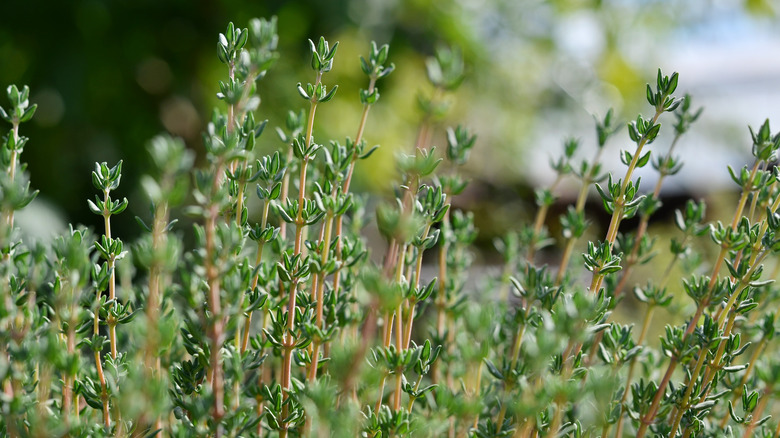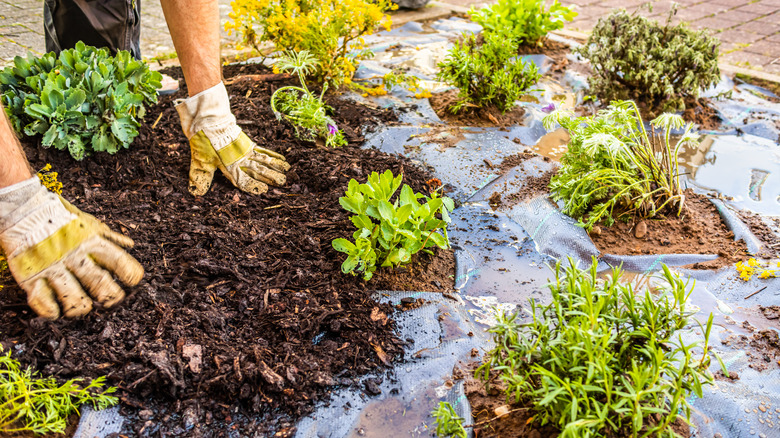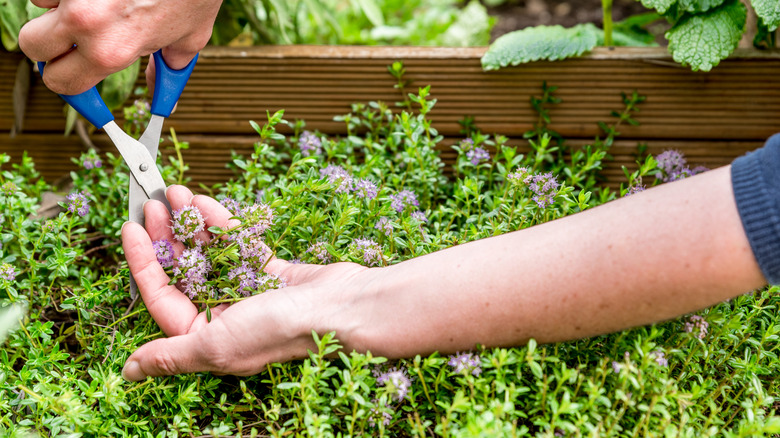What To Do To Keep Your Thyme Healthy Through The Winter
Thyme (Thymus vulgaris) is an aromatic herb that grows easily. This hardy perennial is capable of surviving frigid temperatures as long as properly protected. Luckily, keeping your thyme healthy through the winter is relatively straightforward. Winterizing your crop should mainly consist of laying down protective layers of mulch and trimming when it is time-appropriate. To best protect your fragrant crop, you'll need the mulch of your choice, pruning shears, and the presumed date of your region's first frost.
Winter's sudden freezing temperatures, intense winds, dry air, and precipitation can all damage your outdoor plants. Potted varieties are simple to move indoors for the season, but garden bed crops must face the elements. Thyme, like many herbs, does best in warmer conditions. So, heat retention is essential during the winter months. Removing dead plant matter well in advance so your herbs have time to regrow stronger before combatting freezing temperatures and snow is also important.
Insulate the soil with mulch
Thyme is native to the Mediterranean and thrives in warm soil and moist air. Though it is considered winter-hardy, it can be damaged by extreme temperatures and winter weather. It may be best to relocate thyme indoors when dealing with intense freezing or snowing. However, if you expect a typical winter, pruning and mulching will be enough to protect your thyme. Mulching the garden bed is the best way to keep the soil warm. Mulch traps heat and protects delicate leaves from harsh winter winds. The process is simple once you choose the best type of mulch for your garden.
To insulate your thyme, spread a thin layer of mulch over the garden bed. There should be enough mulch that you don't see the soil, but try to keep it under 3 inches for the best results. Too much mulch suffocates roots by cutting off their supply of fresh air. When applied correctly, mulch will trap the heat that the thyme needs. It will also prevent frigid air from drying out the soil, keeping it and the roots beneath hydrated.
Prune before the first frost
Pruning plants is a surefire way to encourage new growth, but it also helps them grow stronger, thus preparing them for a potentially lengthy winter. However, pruning or trimming thyme in winter may result in plant death. Young stems and leaves struggle to thrive in cold conditions. So, it's essential to trim at least two to three months before your expected first frost. You can find the first frost date for your garden by consulting local weather reports or almanacs. Pruning a plant too late prevents it from healing before the temperature drops.
When it is time to prune, cut away dead, dying, or spent leaves. Trim stems where they look the healthiest. Compost the dead plant matter or let it fall atop the garden bed. The vitamins in the organic matter will leech into the soil and make your thyme even stronger. The stronger the plant, the more likely it is to survive the winter. And, as an added benefit, pruning in a dormant season will lead to a more bountiful spring harvest.


